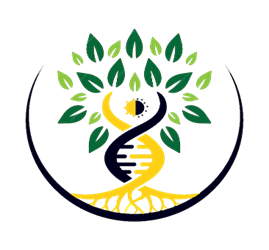Exploring Copper
Nearly 80 percent of the copper that has been mined to date is still in use. An average petrol car contains up to 22.5 kg of copper and high speed trains about 20 tonnes.
Copper (Cu) is a chemical element and is one of the most widely used metals only surpassed by aluminium and iron in terms of quantity of usage. The Romans gave copper its name. They called it “aes cyprium” (ore from Cyprus) because in ancient times most of the copper came from Cyprus. The word was later modified to “cuprum” from which we derive our modern day “copper”. Most copper is mined or extracted as copper sulfides from large open pit mines in porphyry copper deposits, they can also be recovered through the in-situ leach process. Chile is the top producer of copper with at least one-third of the world share followed by the United States, Indonesia and Peru, The amount of copper in use is increasing and the quantity available is barely sufficient to allow all countries to reach developed world levels of usage, the demand surge is caused by the change in technological requirements, shift from fossil fuels to electric, rise in electrical and electronic components, all kinds of nuclear reactor based power plants, smart displays including phone, robotics, The structural change in public transport, trams, high speed maglev trains, small and micro reactor based shipping vessels etc,. Copper has been in use for around 10,000 years, the copper reserves on earth is vast but with the current rate of extraction and technologies, the economically viable reserves available for mining excluding the deep sea, vary from 25 - 60 years, even if recycling is a contributor the price of copper has been on the rise from 1959 and with increasing demand the prices are projected to increase further, as of July 2022 the benchmark price of copper is 7,544 USD per Mt, global copper market is valued at 290B USD in 2021 growing at a rate of CAGR 5.1% and is expected to cross 477B USD by 2030, in 2021 the global consumption of refined copper was 3.5m tonnes. Though more than 150 copper bearing minerals have been identified, only a small number of these are of economic importance with the main being chalcopyrite. The copper bearing minerals can be classified into 3 groups, firstly is copper sulfides which includes chalcopyrite, bornite, energite etc, secondly copper oxides, these are Malachite, Azurite, Chrysocolla, etc., third is copper supergene sulfides which are Chalcocite, Covellite, Cubanite, etc. For a copper ore to become a finished product, they are first beneficiated to remove gangue and other base metals to produce smelter grade concentrate, which involves comminution, concentration or froth flotation and dewatering, further refining grade copper is extracted from the smelt grade concentrates by smelting either by pyrometallurgical processes or hydrometallurgical processes. Refined copper is classified according to the method by which it is refined and are, fire-refined copper, electrolytic copper and chemically refined copper. Copper is almost present in every technological convenience, but is mainly used in transport, building and construction, electrical and electronics, consumer durables, machinery etc, they are transformed into, wire, rods, alloys, casting, plate, sheet, strip, foil, powder, fasteners, paints, tubes, fungicides, nutrients, radiators, electronic circuit boards, copper-ware, sheathings, screens, coils, microchips, and various other materials.

